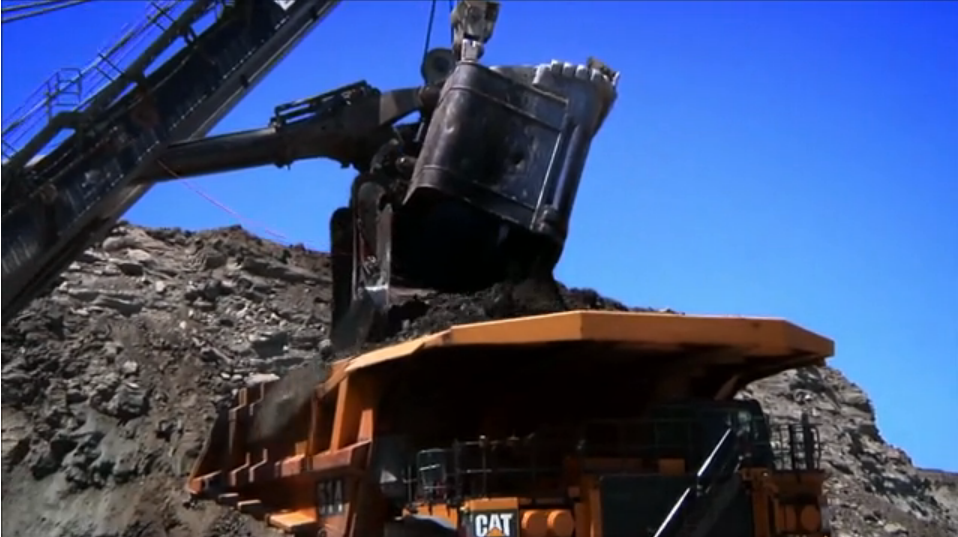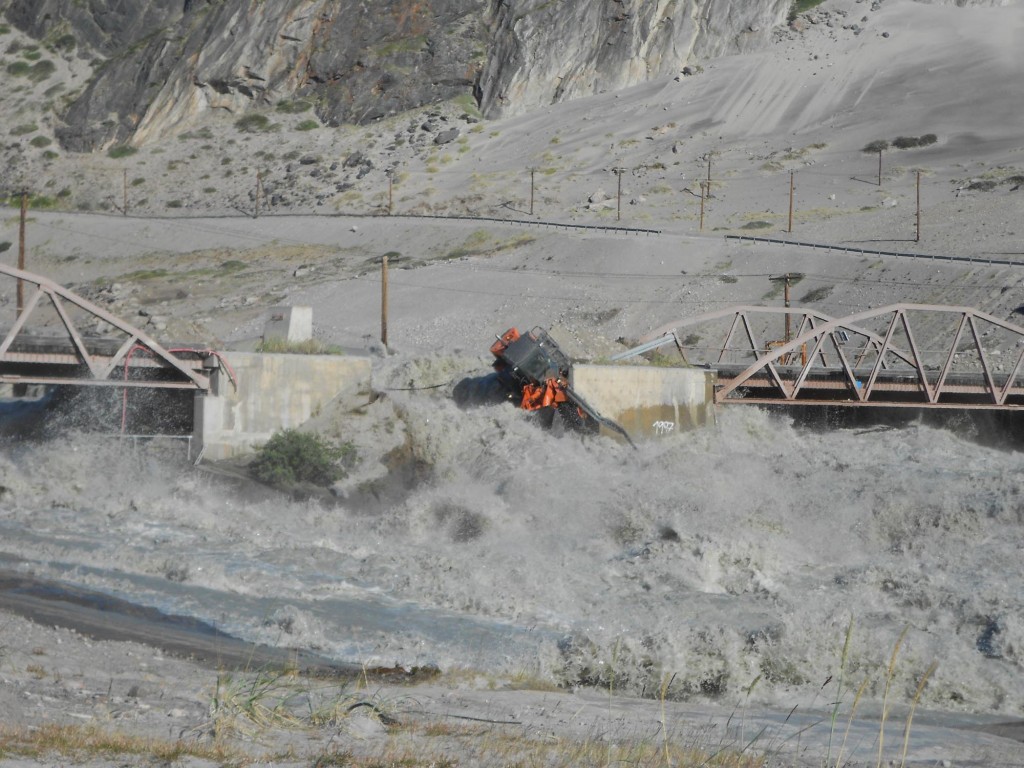This year, the Geological Society of America is rolling out their SWITCH Energy Awareness campaign . The centerpiece of the campaign is a documentary film, SWITCH, which purports to be about the need for a transformation in the world’s energy systems. Recently, I attended the Chicago premier of the film, presented as part of the Environmental Film Series of the Lutheran School of Theology. I had high hopes for this film. They were disappointed. Given the mismatch between what the movie promises and what it delivers, it would be more aptly titled, “BAIT AND SWITCH.”

[Read more…] about Movie review: SWITCH
Climate Science
Unforced Variations: Apr 2013
Response by Marcott et al.
Readers will be aware of the paper by Shaun Marcott and colleagues, that they published a couple weeks ago in the journal Science. That paper sought to extend the global temperature record back over the entire Holocene period, i.e. just over 11 kyr back time, something that had not really been attempted before. The paper got a fair amount of media coverage (see e.g. this article by Justin Gillis in the New York Times). Since then, a number of accusations from the usual suspects have been leveled against the authors and their study, and most of it is characteristically misleading. We are pleased to provide the authors’ response, below. Our view is that the results of the paper will stand the test of time, particularly regarding the small global temperature variations in the Holocene. If anything, early Holocene warmth might be overestimated in this study.
Update: Tamino has three excellent posts in which he shows why the Holocene reconstruction is very unlikely to be affected by possible discrepancies in the most recent (20th century) part of the record. The figure showing Holocene changes by latitude is particularly informative.
____________________________________________
[Read more…] about Response by Marcott et al.
Climate change and consequences on the ground
The link between extreme weather events, climate change, and national security is discussed in Extreme Realities, a new episode in PBS’ series Journey To Planet Earth hosted by Matt Damon.
The video features a number of extreme weather phenomena: hurricanes, tornadoes, floods, wild fires, and flooding. The discussion is about climate change and the consequences on the ground – or, how climate change may affect you.
It is important to ask what is the story behind the assertions made in the video. What scientific support is there for the link between such extremes and climate change?
[Read more…] about Climate change and consequences on the ground
Unforced Variations: March 2013
Urban Heat Islands and U.S. Temperature Trends
Guest Commentary by Zeke Hausfather and Matthew Menne (NOAA)
The impact of urban heat islands (UHI) on temperature trends has long been a contentious area, with some studies finding no effect of urbanization on large-scale temperature trend and others finding large effects in certain regions. The issue has reached particular prominence on the blogs, with some claiming that the majority of the warming in the U.S. (or even the world) over the past century can be attributed to urbanization. We therefore set out to undertake a thorough examination of UHI in the Conterminous United States (CONUS), examining multiple ‘urban’ proxies, different methods of analysis, and temperature series with differing degrees of homogenization and urban-specific corrections (e.g. the GISTEMP nightlight method; Hansen et al, 2010). The paper reporting our results has just been published in the Journal of Geophysical Research.
[Read more…] about Urban Heat Islands and U.S. Temperature Trends
References
- D.E. Parker, "Large-scale warming is not urban", Nature, vol. 432, pp. 290-290, 2004. http://dx.doi.org/10.1038/432290a
- X. Yang, Y. Hou, and B. Chen, "Observed surface warming induced by urbanization in east China", Journal of Geophysical Research, vol. 116, 2011. http://dx.doi.org/10.1029/2010JD015452
- J. Hansen, R. Ruedy, M. Sato, and K. Lo, "GLOBAL SURFACE TEMPERATURE CHANGE", Reviews of Geophysics, vol. 48, 2010. http://dx.doi.org/10.1029/2010RG000345
2012 Updates to model-observation comparisons
Time for the 2012 updates!
As has become a habit (2009, 2010, 2011), here is a brief overview and update of some of the most discussed model/observation comparisons, updated to include 2012. I include comparisons of surface temperatures, sea ice and ocean heat content to the CMIP3 and Hansen et al (1988) simulations.
[Read more…] about 2012 Updates to model-observation comparisons
Unforced Variations: Feb 2013
The Greenland melt
Eric Steig
Last July (2012), I heard from a colleagues working at the edge of the Greenland ice sheet, and from another colleague working up at the Summit. Both were independently writing to report the exceptional conditions they were witnessing. The first was that the bridge over the Watson river by the town of Kangerlussuaq, on the west coast of Greenland, was being breached by the high volumes of meltwater coming down from the ice sheet. The second was that there was a new melt layer forming at the highest point of the ice sheet, where it very rarely melts.

A front loader being swept off a bridge into the Watson River, Kangerlussuaq, Greenland, in July 2012. Fortunately, nobody was in it at the time. Photo: K. Choquette
I’ve been remiss in not writing about these observations until now. I’m prompted to do so by the publication in Nature today (January 23, 2013) of another new finding about Greenland melt. This paper isn’t about the modern climate, but about the climate of the last interglacial period. It has relevance to the modern situation though, a point to which I’ll return at the end of this post.
What to study?
I recently got an email from newly graduated Math(s) major (mildly edited):
I am someone with a deep-seated desire to help the planet remain as habitable as possible in the face of the trials humanity is putting it through. I’d like to devote my career to this cause, but am young and haven’t chosen a definitive career path yet. My bachelors is in pure math and I am considering graduate study in either applied math or statistics. I’m curious what you would recommend to someone in my position. Between getting, say, a PhD in statistics vs. one in applied math, what positions me best for a career in the climate science community? What are its acute needs, where are the job opportunities, and how competitive is it?
My response was as follows (also slightly edited):
As you may know I too started out as a mathematician, and then moved to more climate related applications only in my post-doc(s).
I can’t possibly give you ‘the’ answer to your question – but I do suggest working from the top down. What do you see specifically as something where someone like you could have maximum impact? Then acquire the skills needed to make that happen. If that seems too hard to do now, spend time on the developing your basic toolkits – Bayesian approaches to statistics, forward modeling, some high level coding languages (R, python, matlab etc.), while reading widely about applications.
One of the things I appreciated most in finding my niche was being exposed to a very large number of topics – which while bewildering at the start, in the end allowed me to see the gaps where I could be most useful. At all times though, I pursued approaches and topics that were somewhat aesthetically pleasing to me, which is to say, I didn’t just take up problems just for the sake of it.
I’ve found that I get more satisifaction from focusing on making some progress related to big problems, rather than finding complete solutions to minor issues, but this probably differs from person to person.
But what do other people think? How should people prepare to work on important problems? Are there any general rules? What advice did people give you when you were starting out? Was it useful, or not? Any advice – from existing researchers, graduate students or interested public – will be welcome.